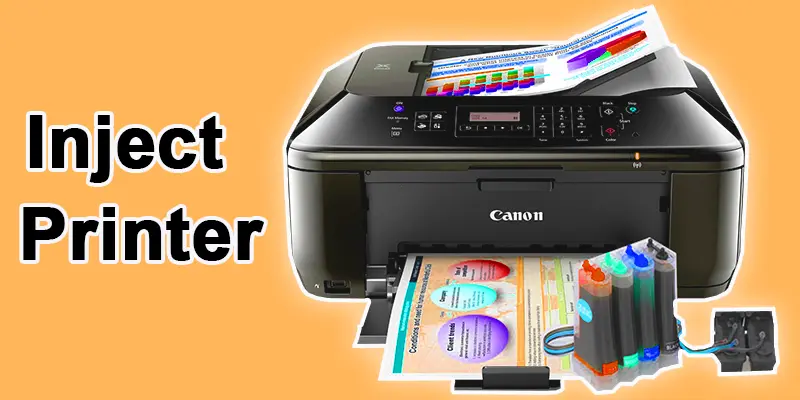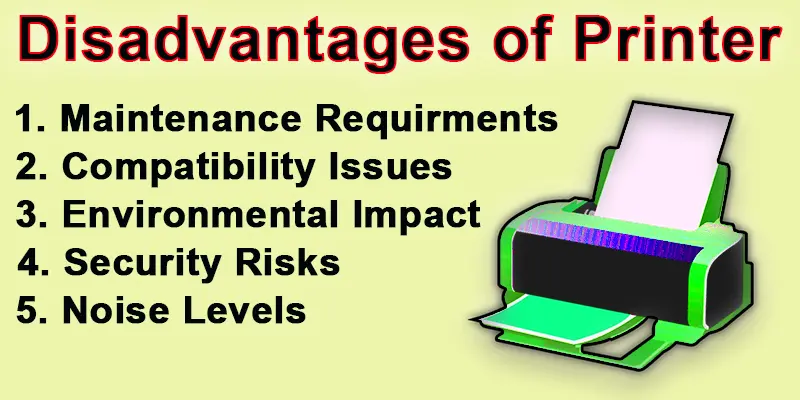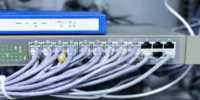Classification of the Printers Designed for Different Tasks and Needs
Published: 9 Mar 2024
Classification of Printer
Printers come in various forms, each designed for specific needs and uses. They can be classified based on technology, purpose, size, color capability, connectivity, speed, and functionality. The environmental impact and duty cycle are also key factors, along with specialized printers designed for unique tasks. Understanding these classifications can help you choose the right printer for your requirements, whether it’s for high-speed printing or eco-friendly operations. These distinctions make it easier to pick the best printer suited for your personal or professional tasks.
Classification of a Printer
Printers can be classified based on various criteria, such as technology-based, purpose-based, size-based, color capability, connectivity, speed, functionality, environmental impact, duty cycle, and specialized printers.
Technology-Based Printers
Technology-based printers cover different devices that use many printing technologies to create documents, images, and labels. This classification includes inkjet, laser, dot matrix, and other emerging printing technologies.
Inkjet Printers
Because they are cheap and flexible, inkjet printers are frequently used to produce excellent-quality color printouts at homes and small businesses.

Laser Printers
Ideal for high-volume printing, laser printers use toner cartridges to produce fast and efficient black-and-white prints.
Dot matrix Printers
Although less commonly used today, dot matrix printers are durable and reliable for printing invoices, receipts, and other forms that require multiple copies.
Purpose-Based Printers
Purpose-based printers are categorized according to their intended use, offering printing solutions for diverse environments. This classification includes home, office, and specialized printers customized to tasks such as photo printing, label printing, and receipt printing.
Home Printers
These printers are designed for personal use at home and are commonly used to print documents and photos.
Office Printers
These are built for high-volume printing in office environments, offering features like network connectivity and high-speed printing.
Printers for Photos
These printers, made especially for high-quality images, may give photography lovers vivid and detailed printouts.
Size-Based Printers
Size-based printers are categorized according to physical dimensions and capacity, offering options customized to different environments and requirements. This classification includes desktop printers and large-format printers.
Desktop Printers
Desktop printers are designed to sit conveniently on desks, offering compact sizes ideal for personal or small office use.
Large Format Printers
These can be printed on larger paper sizes and are often used for printing posters, banners, and architectural drawings.
Color Capability Printers
Color capability printers are classified based on their ability to color print, offering vibrant and visually appealing output options. This classification includes both color printers and monochrome printers.
Monochrome Printers
Monochrome printers specialize in producing black and white prints, making them ideal for environments where color printing is not necessary.
Color Printers
Capable of printing in color, usually using cyan, magenta, yellow, and black (CMYK) combination inks or toners.

Connectivity
Connectivity-centric printers, which include wired and wireless printers, are classified based on their ability to connect to devices and networks, offering options for versatile printing experiences.
Wireless Printers
With wireless connectivity options, these printers allow users to print from various devices without cables or direct connections.
Wired Printers
Wired printers have ports for physical connections to computers or networks, ensuring stable and consistent printing performance.
Functionality
Functional printers are classified based on their capabilities, providing options for various printing requirements. This classification includes single-function printers and multifunction printers.
Multifunctions Printers
Multifunction printers, often referred to as MFPs, combine the functionalities of printing, scanning, copying, and sometimes faxing into a single device.
Single-Functions Printers
Single-function printers are designed solely for printing documents, photos, and other materials without additional scanning, copying, or faxing functionalities.
Speed Based Printers
Speedy printers are classified based on their printing speed, offering options to match different levels of printing demands. Both standard-speed and high-speed printers fall under this category.
High-Speed Printers
High-speed printers are engineered to deliver swift and efficient printing performance, catering to environments with high-volume printing demands.
Standard-Speed Printers
Standard-speed printers offer moderate printing speeds suitable for typical office or home use. The printers balance efficiency and affordability, providing reliable printing performance without requiring rapid output.
Environmental Impact
Environmental impact printers are classified based on their eco-friendliness and sustainability features, providing options for environmentally-conscious users. This classification includes ink-efficient printers and energy-efficient printers.
Ink-efficient Printers
Ink-efficient printers are designed to minimize ink consumption while maintaining high-quality print output.
Energy-efficient Printers
Energy-efficient printers are designed to minimize power consumption during operation, standby, and sleep modes, reducing environmental impact and operating costs.
Duty Cycle Printers
Duty cycle printers are classified based on their recommended monthly duty cycle, providing options customized to different levels of printing volume. Both high-volume and low-volume printers fall under this category.
Low-Volume Printers
Low-volume printers are made for occasional or light printing tasks, offering reliable performance and cost-effective operation.
High-Volume Printers
High-volume printers are engineered to tackle large printing volumes regularly, making them ideal for busy offices, commercial printing operations, and industrial environments.
Specialized Printers
Specialized printers are classified based on their targeted applications and specialized features, offering options for specific printing requirements. These include barcode printers, 3D printers, and photo printers.
3D Printers
3D printers use additional manufacturing technology, and 3D printers can create three-dimensional objects layer by layer, making them suitable for prototyping and production.

Barcode Printers
Barcode printers are specialized devices that print barcode labels, tags, and stickers.
Conclusion about Classification Printer
The classification of printers offers a wide range of options for users with differing printing needs. From inkjet or laser printers to 3D printers and wide-format printers, each classification serves a specific purpose and provides unique features to enhance the printing experience. By understanding these classifications, users can easily choose the most suitable printer for their tasks, ensuring convenience and efficiency in their printing efforts.
FAQS – Printer Classification
What are the classifications of printers?
Printers can be classified based on various factors such as technology, speed, and function.
Could you give any examples of how printers are classified?
The printers are thermal, laser, dot matrix, and inkjet models.
How are printers classified in a computer system?
Printers in a computer system are typically classified based on their connectivity, such as wireless printers, network printers, and USB printers.
What are the classifications of printers based on speed?
Printers like standard, high-speed, and photo printers can be classified based on their speeds.
How are printers classified in a (PPT)?
In a PowerPoint presentation, printers can be classified based on their brand, type (inkjet, laser, etc), and features (color printing, duplex printing, etc).
How are printers classified in a PDF document?
In a PDF document, printers can be classified based on their compatibility with PDF files, print quality, and printing speed.
What is the difference between a printer and a scanner?
The main difference between a printer and a scanner is that a printer produces physical copies of digital documents, photos, and other materials. In contrast, a scanner converts physical documents into digital images.
How do plotters differ from printers?
Plotters are specialized printers that produce large-format prints such as architectural drawings and blueprints, while regular printers are used for general document printing.
What is the difference between a deskjet and an inkjet printer?
Deskjet is a brand name for HP inkjet printers, which use liquid ink droplets for printing.

- Be Respectful
- Stay Relevant
- Stay Positive
- True Feedback
- Encourage Discussion
- Avoid Spamming
- No Fake News
- Don't Copy-Paste
- No Personal Attacks

- Be Respectful
- Stay Relevant
- Stay Positive
- True Feedback
- Encourage Discussion
- Avoid Spamming
- No Fake News
- Don't Copy-Paste
- No Personal Attacks





